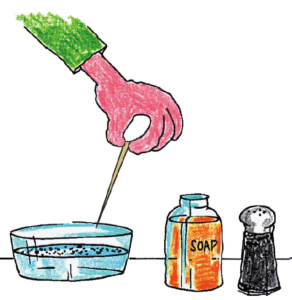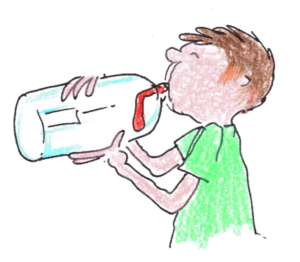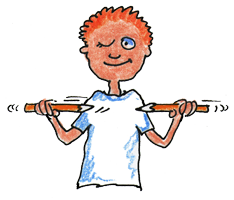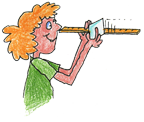Just like many earthquakes, you can model the process of building up pressure and then having it released quickly.
Snap your fingers!
The pressure between your fingers builds up and you continue adding pressure until suddenly the force overcomes the friction between your fingers and you snap!
A great back to school activity. Students love to watch the pepper zip across the water whether it’s as a teacher demonstration or a team activity.
It uses such simple materials you’ll want to send it home to share with families or include it in a Family Science Night.
A sheet of newspaper and a few minutes builds enthusiasm for science, gives students a chance to guess and discuss results, and can be used to introduce patterns in science.
All you need is scrap paper and a few minutes of time.
An activity you might use to practice using information you have to predict what might happen next.
This could be a team activity. Use a teacher demonstration to introduce the activity and then have each team try it with one variation. Report results to the class.
All you need is a plastic bottle and a balloon!
Insert the balloon into a clean empty plastic bottle and pull the mouth of the balloon over the mouth of the bottle.
Ask a volunteer to inflate the balloon. It’s impossible!
Cohesion is a property of liquids. Water is very cohesive, it sticks to itself.
I like using a cohesion activity when a group of students needs to learn to work in teams. This can lead to a discussion about being a cohesive group.
Click on the link for this post to read more and find a link to a free product at my TpT store that includes a take home activity and a dozen copyright free images you can use to introduce this topic.
Got two sharp pencils? That’s all this quick science activity requires.
A great option when you want to introduce perspective and how we see objects, have just a few minutes of class time, or would like to add an activity to your sub folder.
I’ve included resources for these additional options. Use clever images to show forced perspective. Start a discussion about perspective and seeing from another person’s viewpoint. Talk about adapting to vision loss in one eye.
If you liked Where’s Your Blind Spot and Is There a Hole in my Hand? here’s another quick activity that demonstrates how our eyes can fool us.
In Where’s Your Blind Spot, students learned about spots in their retinas that don’t sense light and information is not sent to the brain.
What if you use two eyes to look across a room but one eye is looking through a cardboard tube?
How does the tube change what you see?
Are you teaching light or optics in your physics class or point of view and showing respect towards others during a class discussion? This activity may be just what you need!
What does it mean to have a blind spot?
Why is it important to be aware of your own blind spots?
This activity easily extends from primary grades to high school…









